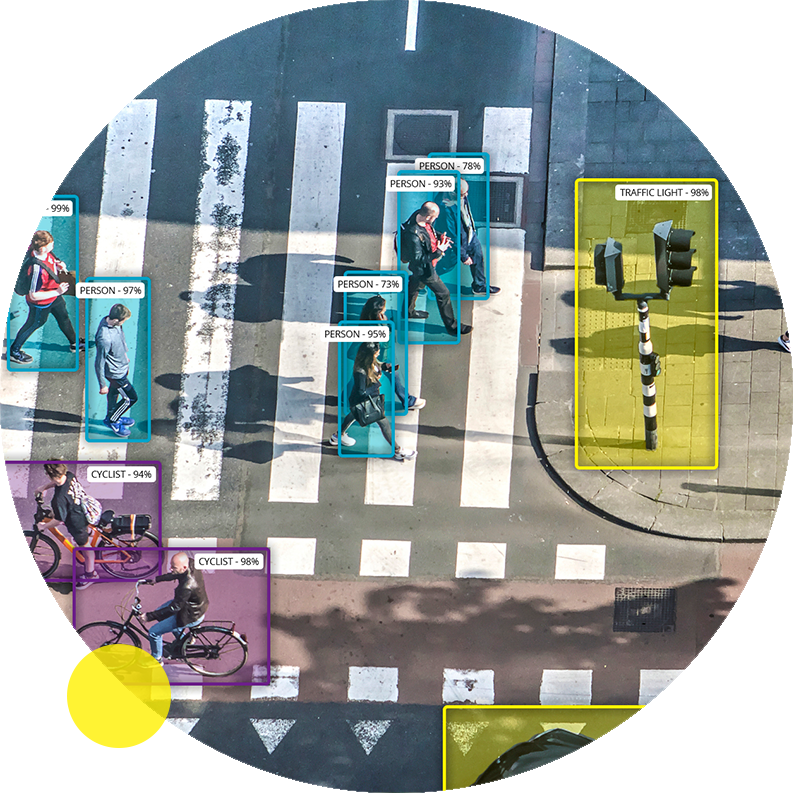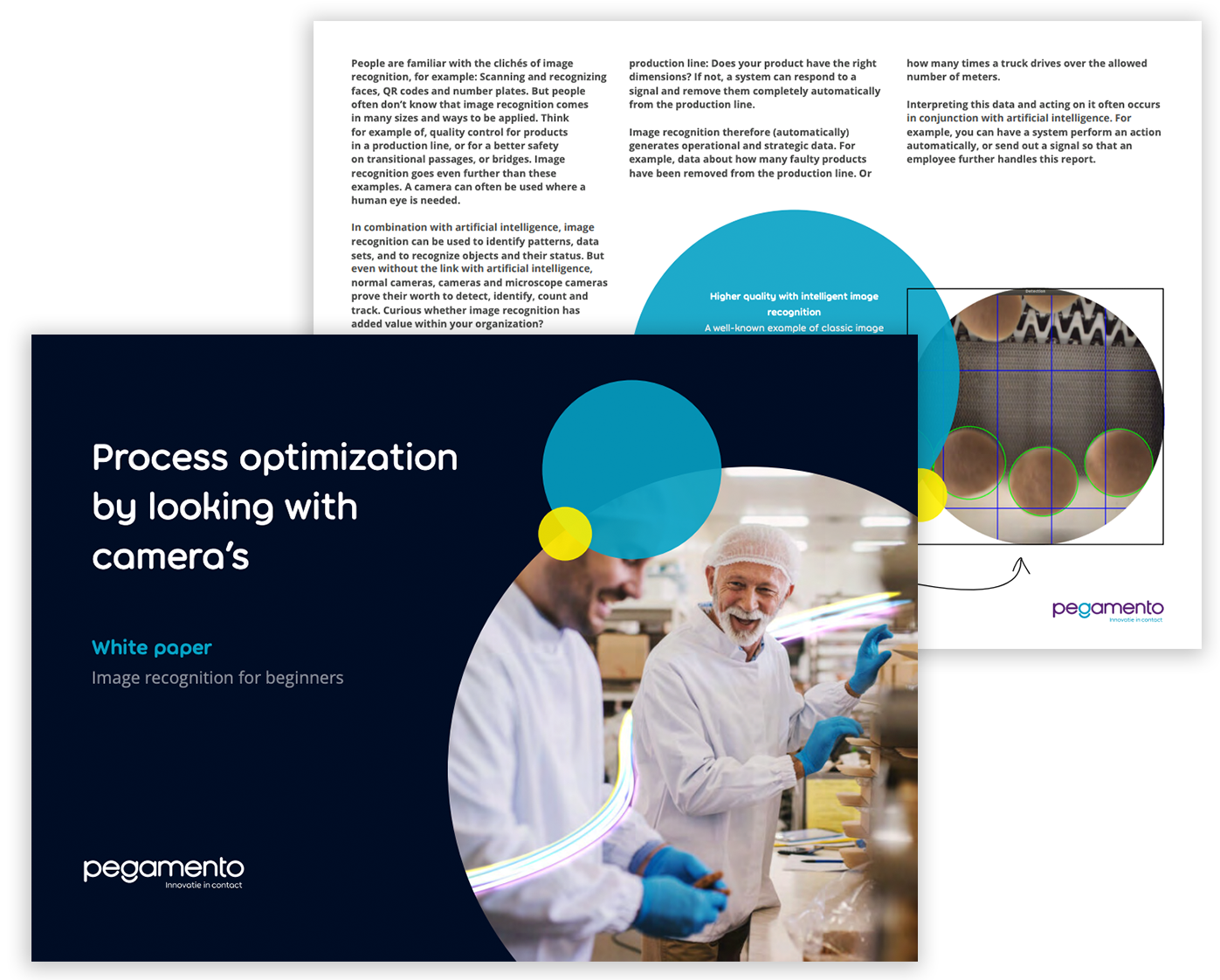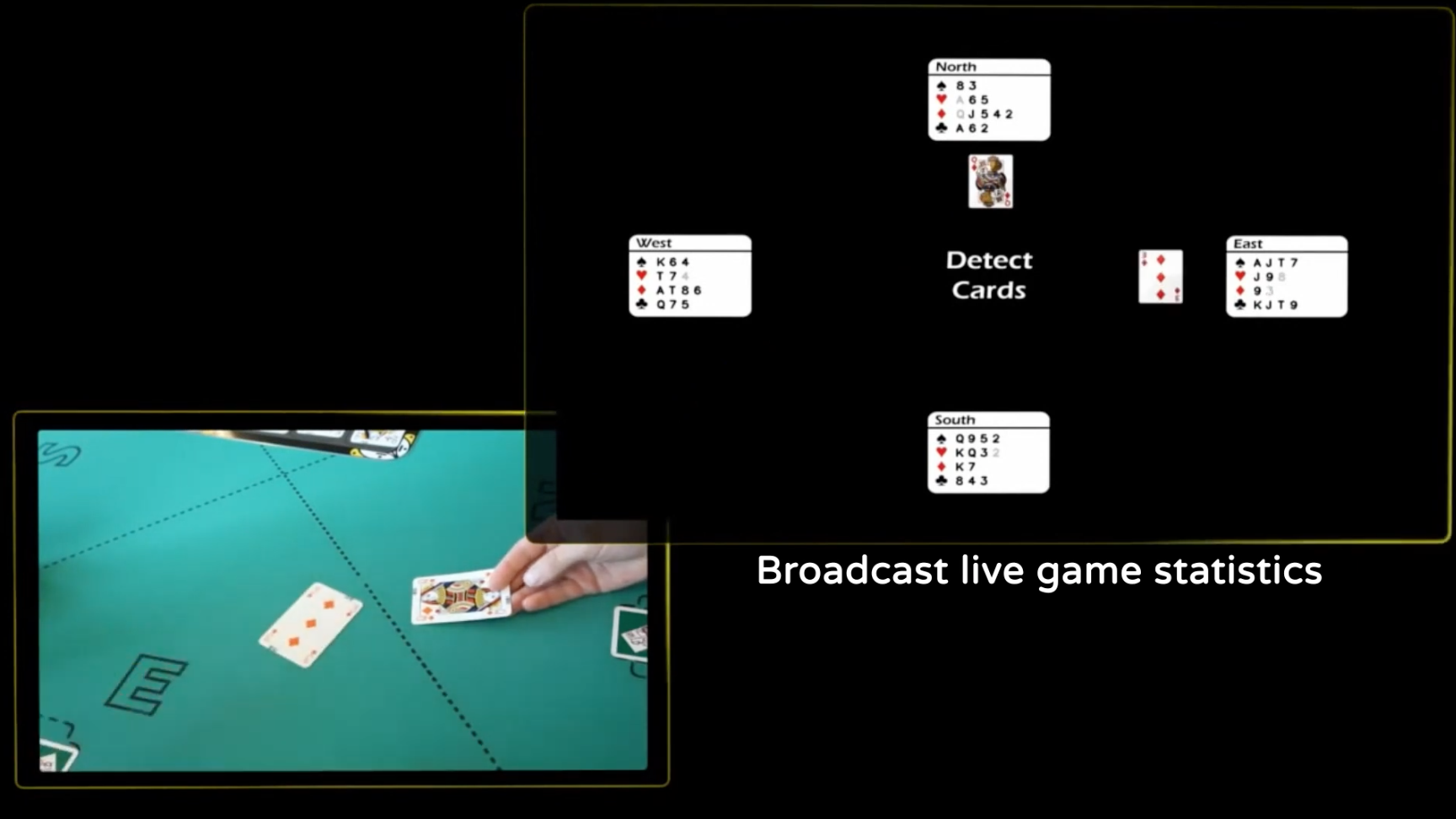
Nowadays, computer vision technology is all around us. It ranges from face detection in a camera application to license plate recognition in a parking garage and the scanning of QR codes. But there are far more applications of computer vision or image recognition.
We apply the technology on normal colour cameras, as well as on 3D depth cameras, satellite imagery, and microscopic images. We use it to detect objects, but also to track, count, and identify them. We develop the software and we are familiar with the hardware that is required for the job.
We often use Artificial Intelligence (AI) in our computer vision applications to get the most useful information out of images or video. When we use this information to make decisions (semi) automatically, we speak of computer vision. But we don't just throw AI technology at any potential problem. We're also accomplished in applying more classical image recognition algorithms if that's the best solution for the case at hand.
In 2020, the team of Studio diip joined Pegamento, adding more than 12 years of experience in developing computer vision applications to the company. Our team of specialised computer vision developers is working on innovative projects with vision at the core every day.
Read on to find out whether computer vision is of added value for your organisation!

Want to know more?
Image Recognition for Dummies
Eager to learn all about image recognition? Download your free white paper here. In this white paper, we'll provide you with insights into whether image recognition could be an additional asset within your organization through a straightforward checklist.

What is Computer Vision?
We usually define image recognition as the ability to interpret useful information from pixels in images or video. If you then use this information to automatically take action or make decisions, we call it computer vision.
We often make use of Artificial Intelligence in our computer vision applications. We then train deep learning networks that are able to interpret the visual world around us. Using images or video sequences that are annotated with the thing we want to detect, we can train these AI networks to classify or segment objects. The software can then use these detections to react to the things they 'see'.
What a specific network needs to 'see' is defined by the developer and the way the network is trained. But we can also use more classical computer vision, where we define exactly what to process in terms of pixels or pixel groups. Regardless of whether we use more classical computer vision or AI, we aim to empower users and systems to do their best at the task at hand, either by automating processes or by keeping users informed.
Computer vision technology
For every project, we use a wide array of different techniques for computer vision. We've outlined some examples of technologies we use that might be part of a solution for your own application.
We use deep learning networks to train systems to detect objects and take certain actions.
Want to know more about AI in computer vision?
We build
Our skills
We develop in/with
The power of computer vision at your fingertips
Smartphones nowadays have plenty of computing power, and connection speed has greatly improved because of 5G networks. This has created a lot of new opportunities for real time computer vision applications on mobile devices.
3D height measurement application
We've developed a 3D height measurement application that makes it possible to get an accurate measurement of a person's height using a smartphone. Parents of children with a growth deficiency can take an objective measurement from home that can be shared reliably with their physician.
Computer vision via 5G
Fish on Wheels (FOW) is a demonstration project for a self-driving aquarium on wheels. FOW consists of an RC car, an aquarium, and a construction to mount a smartphone above the tank. The video from the smartphone is streamed to a server using 5G. The server than analyses the video to detect the position of the fish and turns that into instructions for the RC car. The smartphone then sends these instructions to the car. Because of the minimal delay in connection, this all happens real time.
The power of computer vision at your fingertips
Smartphones nowadays have plenty of computing power, and connection speed has greatly improved because of 5G networks. This has created a lot of new opportunities for real time computer vision applications on mobile devices.
3D height measurement application
We've developed a 3D height measurement application that makes it possible to get an accurate measurement of a person's height using a smartphone. Parents of children with a growth deficiency can take an objective measurement from home that can be shared reliably with their physician.
Computer vision via 5G
Fish on Wheels (FOW) is a demonstration project for a self-driving aquarium on wheels. FOW consists of an RC car, an aquarium, and a construction to mount a smartphone above the tank. The video from the smartphone is streamed to a server using 5G. The server than analyses the video to detect the position of the fish and turns that into instructions for the RC car. The smartphone then sends these instructions to the car. Because of the minimal delay in connection, this all happens real time.
Possibilities of Computer Vision
Detect
Detecting specific objects or people in videos or images. For instance suitcases, birds, or windows.
Identify
Recognise the specific type of objects. For instance convertible cars, specific labels, or face recognition.
Track
Follow detected objects over a period of time. Often used to make sure things aren't counted multiple times.
Register
Storing detected information and registering it in a specific way. Such as counting bread on a conveyor belt or storing weight per car on a bridge deck surface.
Computer Vision application areas
A look in our lab
Interested in the possibilities of applying computer vision in your company?
Computer vision can be applied in many markets and segments. In places where imagery is already used, it is easy to apply, and in many cases a camera is an easy and flexible addition. The technology is innovative, but surprisingly simple and affordable to apply.
Is computer vision a match for your company? What kind of reductions or quality improvements are possible within your processes?
Apply for an introduction using the form to find out how computer vision cam make a difference in your company.





